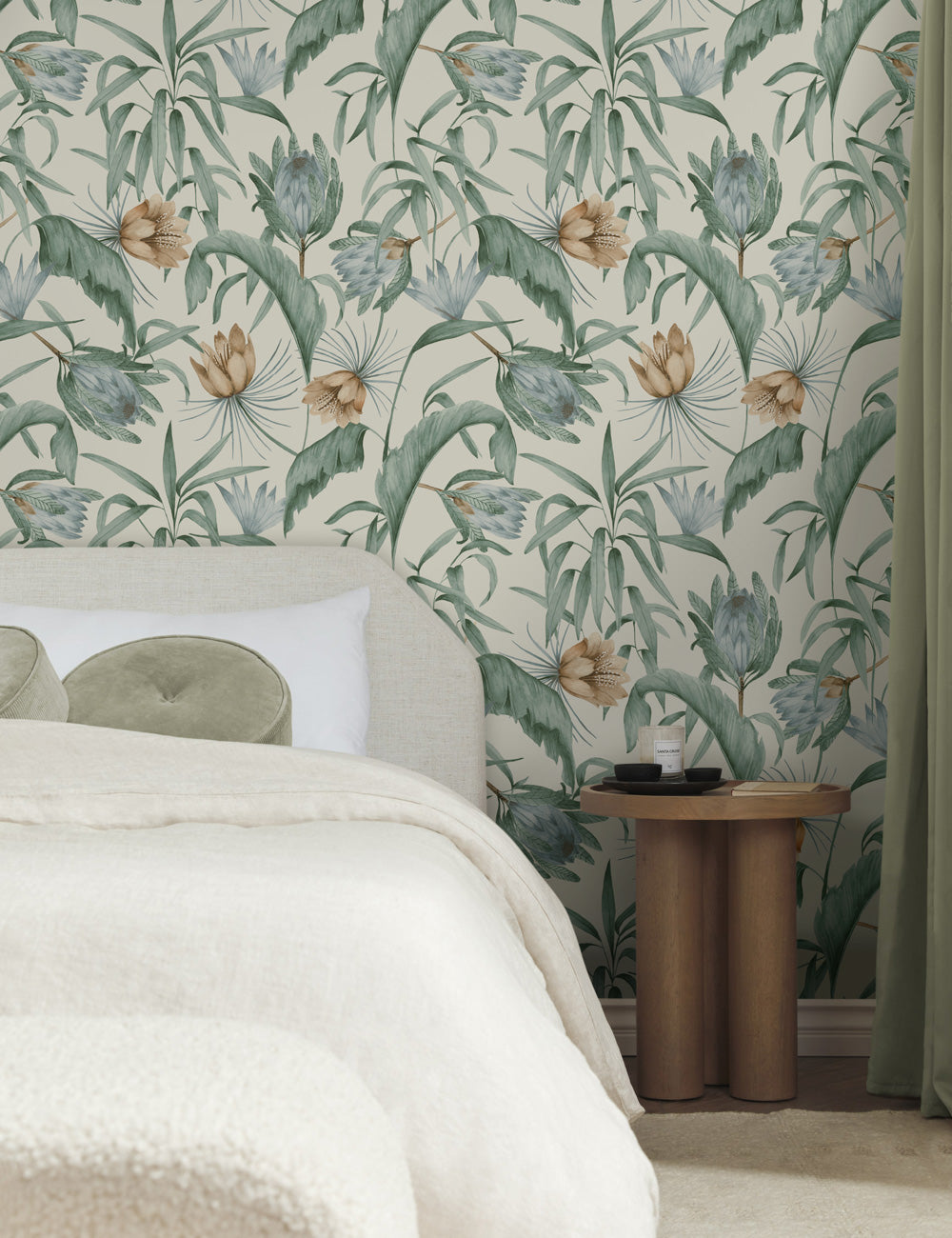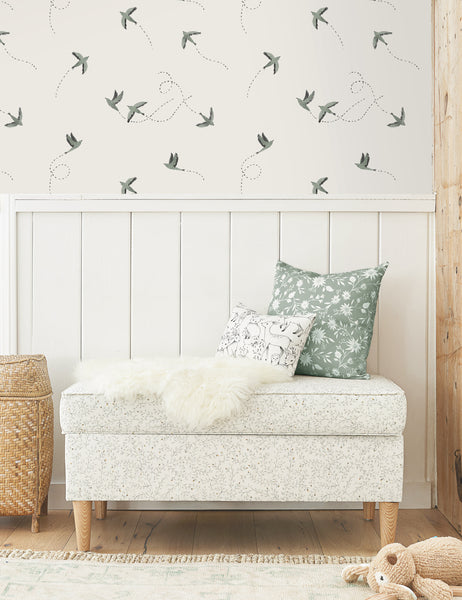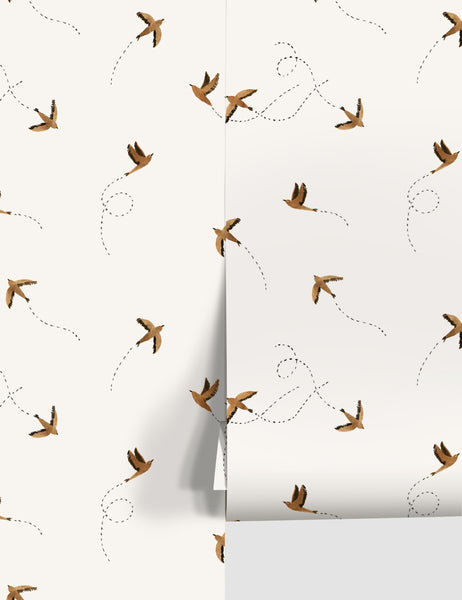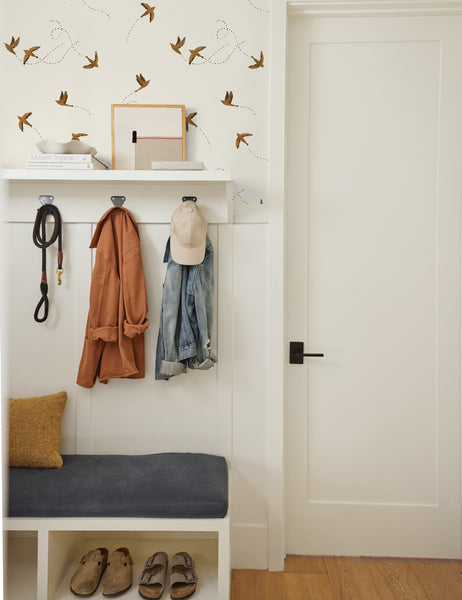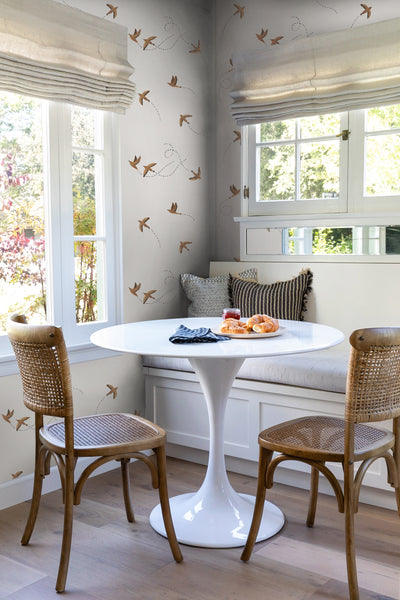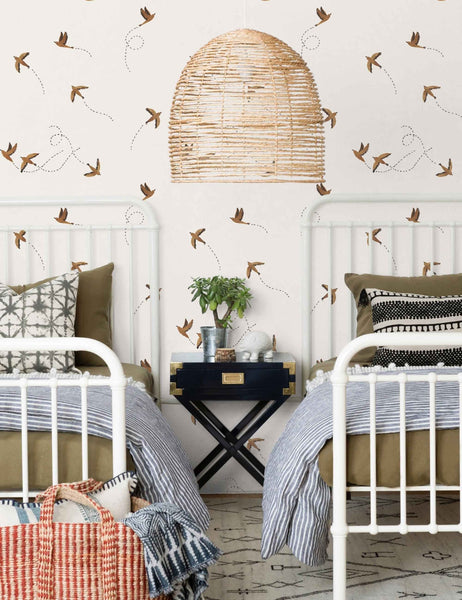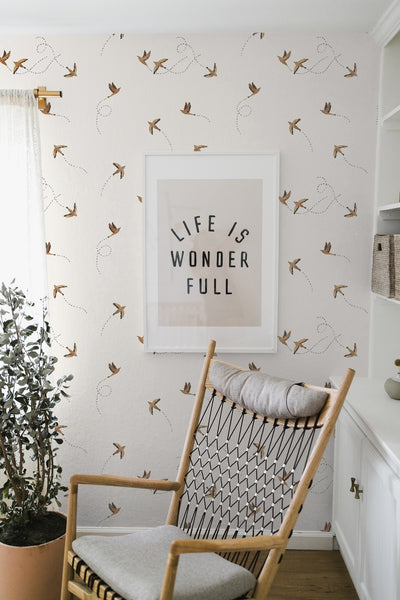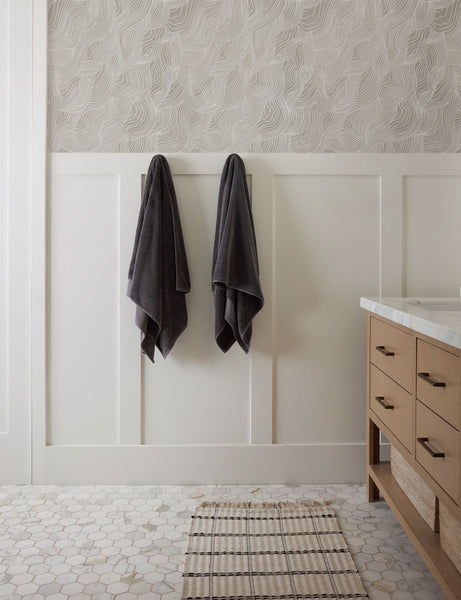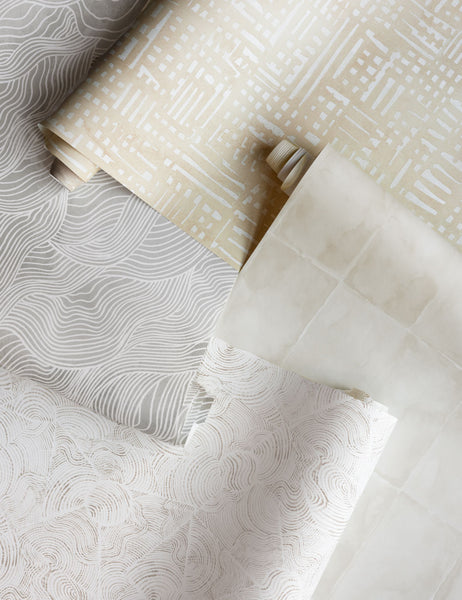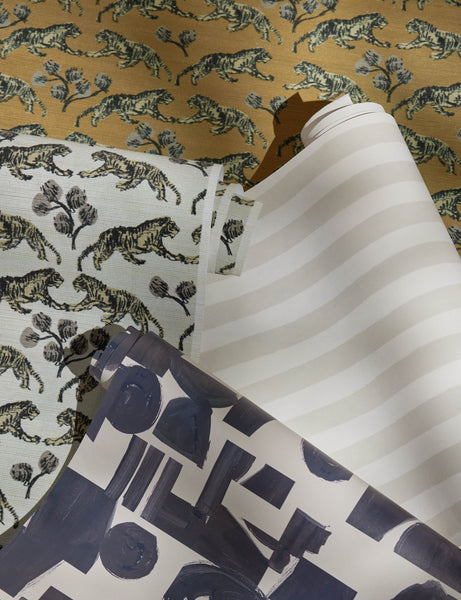Our mission here at Lulu and Georgia is to bring beauty into your home. Your home is the crucial part of that statement. We want to ensure we help properly incorporate our products into your space and have you love how they look and feel. Wallpaper offers almost endless opportunities to bring tone, texture, pattern, and dimension into a space. Transform a bedroom with ornate details and saturated color, create a fun, functional kid's room, or take a maximalist approach in your home office. Decorative wall coverings also need a lot of context and product information to help you shop and discover the exact style for your curated look. Our selection of wallpaper is incredibly distinctive, featuring different designers, textures, and sizes. That is why in addition to offering free swatches of every style to sample the look at home, we want to take a moment to answer some of your most frequent questions about our collection. We cover everything from how much wallpaper you need to the types of materials to some installation and removal tips. Read on for more of our—pardon the pun—wall-to-wall coverage.
 |
 |
How much wallpaper do I need?
Wallpaper rolls are measured in square feet—equal to the wall's height times the width. Our curated selection of wallpapers has different square footage, so please note the square footage for your preferred wall covering. Here are a few guidelines to keep in mind when calculating the square footage:
- Make sure to remove the height of any crown molding or baseboard from the ceiling height measurement.
- Measure the square footage of openings in your space—including entries, doors, and windows. Subtract that number from the total.
- Next, divide the total square footage by the square footage of a single roll from the wallpaper of your choice. That will determine the number of wallpaper rolls you'll need.
- Finally, we recommend you round up that number to account for pattern repeats and variations. When in doubt, order more than you think you need.


What does a pattern repeat mean?
The pattern repeat measures the design on your wallpaper. It is the vertical distance between one point in the pattern and where that identical point appears again. Pattern repeats can vary in size and are important to keep top of mind when deciding how much wallpaper to order.
What are the different wallpaper materials?
Our wallpaper collection is made from four different materials, each providing its own benefits and characteristics. The four types are grasscloths and natural fibers, non-woven, gravure-printed, and digitally printed. Please click here for more information on each material.
Grasscloths + Naturals Fibers
Handwoven from natural fibers and grasses—like jute, sisal, and raffia—grasscloth wall treatments offer a highly textured look in a palette of earthy tones.
- Due to this wallpaper's natural material and handcrafted process, variations are expected for each roll and are considered part of its organic appeal.
- Care and upkeep are more extensive for grasscloth wallpapers and require spot cleaning with a dry brush or cloth.
Non-Woven
Non-woven wallpapers are crafted from a blend of natural and synthetic fibers and are easy to install and remove—leaving your walls smooth and abrasion-free. Lightweight, breathable, and wipeable, these coverings are a great fit in a kitchen, bathroom, and other spaces susceptible to moisture.
- Non-woven wallpapers are easy to care for. You can wipe them down with a soft, damp cloth.
Gravure-Printed
Introduced in the 1950s, gravure-printed wallpapers feature incredibly detailed patterns, deep tonal effects, and stunning color gradations. Its mechanized process can also create effects such as watercolors, transparent colors, and marbleized patterns.
- Gravure-printed wallpapers can be wiped clean with a dry brush or cloth.
Digitally Printed
Digitally printed wallpapers offer photographic-quality designs and limitless color schemes as they are printed from a digital file. That also reduces production time and cost, allowing for limited-edition runs and smaller batches.
- Digitally printed wallpapers can be wiped clean with a dry brush or cloth.
Sparrow Wallpaper by Rylee + Cru
$148.50
Tropical Wallpaper by Rylee + Cru
$168.00
Alina Wallpaper
$89.00
Organic Shapes Wallpaper by Sarah Sherman Samuel
$99.00

What is a substrate, and what are the various types?
The substrate or backing is the portion of the wall covering that goes against the wall. The pattern and texture of a wallpaper style usually command most of a customer's attention, but functionally, the backing of these products is just as important. This backing can be made from various materials, from woven and non-woven fabrics to lightweight paper products. The four most common substrates are paper, woven fabric, non-woven fabric, and latex acrylic.
- Paper Backings: used on paper-backed vinyl, vinyl-coated papers, and specialty products.
- Woven Fabric Backings: commonly referred to as scrim or osnaburg. Scrim is used mainly in light construction areas, while osnaburg is installed in medium to heavy usage areas, such as commercial corridors.
- Non-Woven Fabric Backings: offer improved printing techniques in different grades while maintaining the tear-strength qualities necessary for commercial installations.
- Latex Acrylic Backings: used primarily on fabric wall coverings to allow for stability and improved hanging qualities.

How do I install wallpaper?
We always recommend hiring a professional to install any wallpaper which is not from our capsule of peel + stick options. (link here)
Installing peel + stick wallpaper
Peel and stick wallpaper has recently risen in popularity due to its easy installation and mess- and residue-free removal. For best results, clean, dry, and smooth all surfaces before applying your peel + stick wallpaper. Do not apply to freshly painted or papered walls, lacquered furniture, or on any textural surfaces. We recommend having two people hang the wallpaper. Tools needed are a tape measure, level, steel ruler or straight edge, a razor-sharp knife, pencil, and plastic smoother.
- Pre-cut strips to the wall height and allow an extra inch on top and bottom for trimming. Make sure to align any design before cutting and hanging each strip. Number the back of each to keep your design in the correct order.
- Measure the width of the paper and lightly mark the wall with a pencil. Using your level, draw a straight line down. That is the guide for your 1st strip, and it needs to be a straight, vertical line.
- Apply the treatment to the top of the wall, allowing a bit of excess to overlap the ceiling, which you will trim later. Align the right side of the strip to your mark, and then lightly press the edge to the wall along the mark.
- Peel the backing away as you evenly press the paper to the wall a few inches at a time. Be careful not to pull or stretch the material, or the pattern will not align. We recommend one person guide the paper along the top and side while another holds the opposite edge away from the wall until the seams line up.
- Using a plastic smoother, apply firm pressure to remove air bubbles, and make sure that the wallpaper properly adheres to the wall.
- Trim excess material at the ceiling and baseboard with a straight edge and sharp razor knife.
Repeat by aligning your next strip to the right edge of your previous strip. Pro Tip! For some patterns, you may want to try overlapping each strip slightly. Just make sure that the design aligns properly.
 |
 |
How do I remove wallpaper?
We recommend always hiring a professional to remove wallpaper unless it is for a peel + stick style.
Removing peel + stick wallpaper
- Start at the top corner and gently pull the wallpaper down, working parallel to the wall.
- Pull it down slowly and gently if you plan on reusing the peel and stick wallpaper. You can easily over-stretch it.
Pro Tip! Don't allow the adhesive sides of the wallpaper to make contact, especially if you want to reuse it. They are very difficult to separate once they have touched.
How do I care for my wallpaper?
While unpacking:
Make sure dye lot numbers match—we recommend that customers order all rolls in one order to guarantee the lot numbers will match. It’s better to order more wallpaper rolls than not enough. That means all the rolls of wallpaper from one dye lot number will have an identical ink and background color since it is all printed from the same batch of ink on the same background color.
During installation:
For traditional wallpaper that requires paste application, we recommend a professional to install your wallpaper. For pre-pasted or peel + stick wallpaper, keep these tips and tricks in mind:
- Tools you should have at your fingertips: level, utility knife, sponge, measuring tape, seam roller, straight-edge knife, smoothing tool
- Prep/clean your surface.
For cleaning and maintenance
Regular cleaning with a vacuum and soft brush attachment is recommended, especially with textured wallpaper. You can clean washable or scrubbable wallpaper styles with soap and water (but do not use bleach or strong cleaning chemicals or abrasive cleaners). Please note that you can’t wash some textured or paper materials.
